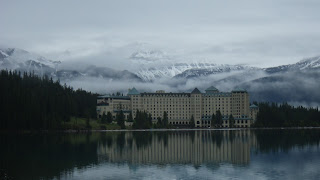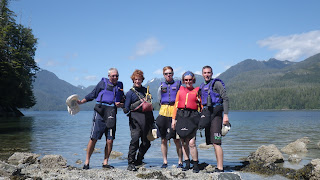I joined Doug and Bethanne in Grenada in mid-Oct and we spent a pleasant couple weeks making our way up to Bequia and the Grenadines for the start of their second around the world adventure.
I really enjoyed the friendly locals and beautiful scenery of Grenada, Union, and Bequia. Life moves at a different pace in such places and we had many opportunities to go ashore and meet and chat with the local people.
From Bequia we headed West into the sunset for the islands of Bonaire and Curacao. The Antilles had a different feel from the islands we had just come from and were far more developed and industrial. Before arriving in Curacao we stopped in Klein Curacao, a lovely little island complete with thatch-roof huts, a ship wreck, and and old abandoned lighthouse. The clear waters made for good snorkelling too.
After 12 days in Curacao, we were itching for a change of scenery. By that time, Chris Reed, a relative from Colorado, had come aboard to crew for a couple weeks so the four of us waved goodbye and motored on westward towards Cartegena, Colombia.
If I thought Curacao was developed I was in for a shock pulling into the anchorage in Cartegena Bay, flanked by a massive shipping dock on one side and a Miami Beachesque skyline on the other.
 |
| A real nice schooner Alessandra against the high-rise backdrop |
We have now been in Cartegena for over a week and have spent our days wandering through the old part of the city, discovering the market places and taking part in the timeless Spanish tradition of the afternoon nap - a much safer alternative for beating the heat than swimming in the brown water.
 |
| Me, Doug and Chris discovering the old city |
 |
| San Pedro church in the heart of the old city |
 |
| We often had to make way for horses along the trail |
 |
| Typical beach in Tayrona National Park |
Everyday aboard has been a learning experience and keeping an 80+ year old ship in top-notch condition doesn't happen by magic - it requires constant hardwork and maintenance. Captain Douglas 'Crunch' Hazelton always takes the time to explain every aspect of the ship and the work that needs to be done, from scrubbing the deck to painting the anchor with tar apoxy to blasting away rust with a needle gun - it all has to get done.
 |
| The hard working crew |
 |
| Working slightly harder raising the mizzen sail |
 |
| On a night watch in the wheelhouse (notice the little cat YingYang keeping me company) |
Being aboard Sindbad is about living in the moment: feeling the excitement as we pull into an exotic new locale, enjoying a peaceful moment with a good book surrounded by endless miles of ocean, or immersing ourselves in great conversations about life, dreams, and adventures ahead.
 |
| Enjoying a nice meal in an old wine cellar |
I would highly recommend joining Doug and Bethanne on Sindbad to anyone with a sense of adventure looking to discover the world.









































